And Never Let Her Go: Thomas Capano: The Deadly Seducer Read online
Page 6
There would be no more sleeping on mattresses on the floor. The Capanos all had their own rooms, and so did visitors, and their own access to a private beach. They swam and turned mahogany in the sun while Marguerite cooked pots of spaghetti or pasta e fagioli in her modern yellow-and-white kitchen. They still drank the strong red wine that Lou and the boys made: dago red. They called it that, too.
Lou Capano had come such a long way from the seven-year-old Calabrese immigrant in New Castle. Almost single-handedly he had built most of north Wilmington. He could drive down street after street and see the fine houses with his stamp on them. He had honored his family with short streets named for them. There were streets named Thomas, Louis, and Joseph, but there were also streets in Weldin Farms surely meant to commemorate the birth of his youngest son: one cul-de-sac called Gerard Circle, and the next, Capano Court. It was a small vanity for a man so down-to-earth.
Lou had given his family a mansion in the city and a paradise on the Atlantic Ocean, but still he always felt humble next to someone who had a formal education. And he had dreams for his children; he had meant for them all to go to college, and he would be the proudest man in Wilmington. Louie had proven that he didn’t need a degree to carve the Capano name in Delaware real estate history. And Joey was in the business, too. But Thomas—Thomas was the scholar.
Someday his boys would take over Louis Capano & Sons, Inc., and maybe he and Marguerite would retire and live on the beach, welcoming grandchildren and watching the sea roll in.
TOM had graduated from Archmere in 1967 and been accepted at Boston College. There he met Kay Ryan, a pretty, half-Irish, half-Italian nursing student who was a year younger. She was a sweet-tempered, capable girl from Connecticut, who would graduate in 1973. Kay came from a family of five children, and she had a twin sister. Her dad was a classic Irishman, ruddy and hearty, and Tom was so different, quietly brilliant, capable, and thoughtful so much of the time. Even though he spoke in a gentle voice, there was something compelling about him. Kay was a good foil to Tom. While he was sometimes moody, she was steady and a natural caretaker. They dated all through college. “I decided to go to law school at Boston College because of Kay,” Tom remembered. “I had graduated, but she had another year to go.”
Kay and Tom were married in Fairfield, Connecticut, at high noon on June 17, 1972. Tom always said it was easy to remember his wedding day because it was the same day as the Watergate burglary. When she graduated, Kay found a job as a public health nurse. Her work took her to some of the shabbier and more dangerous streets in Boston, but she enjoyed it. Kay didn’t have to work—Lou and Marguerite supported the young couple and paid Tom’s tuition—but she wanted to work and she loved her job.
When Tom graduated from law school in 1974, his father was so proud that he cried. His oldest son was a lawyer! It was the realization of all of his dreams.
Kay and Tom Capano moved back to Wilmington after he graduated, but he didn’t look for a job right away. He studied that summer of 1974 for the Delaware bar exam. The young couple lived in a town house near Newark, Delaware, one of the ninety-six similar units in the huge Cavalier Country Club complex that Louie, Joey, and their father had built while Tom was in college in Boston.
Kay went to work immediately as a public health nurse, although Tom complained that he worried about her in the meaner neighborhoods of Philadelphia. He told people that he would have actually preferred that she not work at all. There was no need—his parents would take care of them until he was established.
In the fall, Kay enrolled at the University of Pennsylvania to work toward her master’s degree. She was a natural caregiver and saw no point in studying so long to be a nurse and then never practicing her profession. Kay hadn’t become pregnant in their more than two years of marriage and they were both a little disappointed about that, but not truly worried.
Marguerite approved of Kay as a daughter-in-law. She had seen how all of her sons had their eyes out for women, and there were any number of females she would not have chosen to join the Capano family. Kay Ryan Capano was pretty, smart, and strong—but not at all pushy. She adored Tom and waited on him hand and foot, just as Marguerite had always done.
July 4 was the official day for the Capanos to start the summer season at the shore. They always had a big party with fireworks. This year was no different, but now Tom and Kay were back in Wilmington with the family again. Tom studied for the bar exam all summer and he passed, but in Delaware, that didn’t mean he was officially an attorney; he still had to serve six months as a clerk. After his apprenticeship in a law firm, Tom’s first job as a lawyer was with the Public Defender’s Office. He enjoyed it; he had always been more interested in public service than in high-powered business. There, he and Louie—and even Joey—seemed to differ. For a year, Tom defended the indigent. It didn’t matter to his father where he worked; it was enough that his oldest son was officially a lawyer. He was very, very proud to be able to say, “My son the lawyer.”
Tom moved from working as a defense attorney to being a prosecutor. For the next two years he was a prosecuting attorney for the Delaware Attorney General’s Office, assigned to New Castle County and working in Wilmington. He hadn’t made much money as a public defender, and he made exactly the same as a prosecutor, but he was excellent in his prosecutorial role and he was very popular around the courthouse.
One of the cases Tom successfully prosecuted was a murder charge against a man named Squeaky Saunders, convicted in the shooting death of an associate. Squeaky, a habitual offender, had shot one of his cohorts in the head, and then ordered the two men with him to fire into the body, too—so that they wouldn’t be inclined to tell. They attempted to dump the body in the Delaware River, where it would eventually drift to the Delaware Bay and then into the seemingly bottomless depths of the Atlantic Ocean. Squeaky’s plan went awry early on when the body was caught in some sluice gates and was recovered with an obvious bullet wound in the skull that made authorities dismiss the possibility of accidental drowning.
Tom studied autopsy reports that showed the path of the fatal bullet, the entrance and exit wounds. Although he had no plans to choose criminal law as his ultimate goal, he was, for the moment, caught up in the intricacies of his first murder case. With his coprosecutor, George “Butch” Seitz, Tom presented a case that sent Squeaky to Gander Hill Prison for a long time. Squeaky always claimed misconduct on the part of the investigating officers, but that was a common complaint among convicted felons.
Tom still had the natural ease with everyone he met that made them all feel special, that he was truly focusing on them. “He had a God-given knack for friendship,” one court reporter recalled. “It seemed to come so easily to him to treat people kindly, and everyone really liked him.” He was friendly with everyone and it didn’t matter if it was a judge, a court reporter, or a janitor. Women around the courthouse were captivated by his sex appeal and by his voice. “He was not soft-spoken,” one woman who’d worked two decades in the courthouse said. “Tom was gentle voiced, and there’s a difference. Some people call it charisma, but he had something more than that.”
Tom remained the “good” son, and Marguerite and Lou sometimes compared his steady dependability with Louie and Joey’s more flamboyant style. Even so, all three of their older boys were considered the good Capanos, as opposed to the “bad” Capanos—some of Lou’s brothers’ boys had gotten into scrapes with the law, and that made Lou and Marguerite just a little smug about their sons. They never looked down on their nephews, but they were aware that people around Wilmington made a distinction between the various family units.
Family was family, however, and they all stuck together against outsiders who might snipe at any of the Capanos who had come from Calabria almost fifty years earlier to settle in New Castle. Lou always found jobs in his construction business for his relatives.
By bringing Louie into the Cavalier project, Lou Capano had assured not only his fortune, but a fortu
ne for all of them. When that enterprise boomed the way it did, he knew he would never have to worry about having an income in his old age; with apartment houses and malls and whatever Louie visualized next, the Capanos were unbeatable. But even though Louie had brought that about, Tom was still the golden son. It was a fact that they all appeared to accept; there was no overt jealousy among the brothers, and probably no jealousy at all. There was so much to go around, so much of everything: money, love, social standing, and wonderful houses.
In addition to the place he built at the shore in Stone Harbor, New Jersey, Lou decided they needed another vacation spot. Delaware could be bitterly cold in the winter, so he bought a place in Boca Raton, Florida, that they could all share. Boca Raton, which means “the mouth of the rat” in Spanish despite its exotic soft sound, drew some of the richest tourists in America.
Marguerite and Lou had always been supportive of St. Anthony’s Catholic Church and they helped Father Roberto Balducelli as much as they could. Father Roberto had always been tremendously impressed that their young son would be so concerned with the less fortunate. The priest felt that the church needed a center for its social work, and he approached church members to serve on the board of St. Anthony’s Community Center. Tom joined the board of directors and often stayed after the meetings to talk with Father Roberto. He was very much interested in the welfare of children, and supported Father Roberto’s project to provide a summer camp for children of the inner city. The camp, located close to the Delaware-Pennsylvania border, was called St. Anthony’s of the Hills and was built against the better judgment of many parishioners, who believed it meant too much debt for the church to take on. But Tom welcomed the controversy, and he donated his time and his money generously to the church.
AFTER two years as a deputy attorney general, Tom decided to take a job in the private sector. Although he figured he could never hope to equal his brothers’ income, he needed more money. “I really liked those jobs,” he recalled. “I liked being in the courthouse . . . but I knew I couldn’t do it for a career. I was recruited by a law firm here in Wilmington.”
Tom’s new position with Morris, James, Hitchens & Williams didn’t pay appreciably more than his state job at first—but there was great opportunity for advancement. After a year and a half, his salary would increase. It was a general law firm—nothing exciting or particularly challenging—but a good solid spot for a young family man. Now, with his new prospects, he could afford to buy a house.
Tom and Kay Capano wanted very much to have children, but after five years of marriage, Kay still had not become pregnant. All around them, other couples were having children so easily, but they weren’t. They talked with Father Roberto and decided to apply to adopt a baby through Catholic Children’s Services.
Knowing that they would have children—one way or another—Tom and Kay went house hunting. They finally settled on a home that would have enough room for a dozen children; the Catholic diocese was selling the place that had been a residence for a succession of local bishops. The huge white stucco house on the corner of Seventeenth and Greenhill covered over half a city block with all its additions and annexes. Built in 1920, it had many large formal rooms and reception areas. Although the bishops had not served liquor, there was a grand bar area. The basement recreation room was all done in the finest woods, fitted out by a cabinetmaker.
The lot was 18,740 square feet, and it would only go up in value because it was in a good neighborhood near parks and schools. Although almost everyone else in the family was living in a Capano-built home, Kay and Tom decided to buy the house in August of 1978. It was a good investment; ten years later, it would have an assessed value many times what they had paid. Their contemporaries had homes with three bedrooms, a bath and a half, and a recreation room with a vinyl floor and plywood-paneled walls. Tom and Kay had a house that could easily have held two or three of their friends’ places.
Tom moved steadily up through the ranks at Morris, James, Hitchens & Williams, his salary now far more than he had ever made as a prosecutor. He and Kay had a circle of friends—other young lawyers and their wives at Morris, James. He kept his friends from the courthouse. They went to the shore in the summer and to Boca Raton in the winter.
Although Tom was invariably friendly, one young attorney would recall that he could be a little stodgy and more than a little stubborn if he didn’t get his own way. Several couples had driven down to Boca Raton during spring break week, and everyone thought it would be fun to go for dinner at one of the spots where the college kids were welcome. Not Tom. He suggested that they go to one of the most expensive restaurants in Boca, which was very formal and had many-course gourmet meals.
“We all wanted to wear shorts and T-shirts, and Tom got all dressed up,” the attorney said. “We asked Kay what she wanted to do, and she just looked down at the ground—it was clear that Tom made the decisions.”
At length, the vote among the group was to go to the casual hangout. “Tom wouldn’t get out of the car. He just sat there. When we finally got him to come in, he stood at the end of the bar with a poker face and brought everybody down.”
It was only one night, but it was a look into another side of Tom Capano. When he got his way, he was absolutely wonderful to be around. When he didn’t, he could be coldly furious.
At Christmas 1979, Kay and Tom had exciting news to share with the family. There would be no need now to arrange for an adoption through Catholic Children’s Services; Kay was pregnant, due in August.
Maybe life was too good. In 1980, Marian was thirty-five. Tom, Louie, and Joey were thirty, twenty-eight, and twenty-seven, respectively. Gerry was going on seventeen. Aside from some broken marriages, the “good” Capanos had had a remarkably smooth life. But on the bright edge of spring, they suffered a loss from which they would never recover. It was February 28, 1980, and Louie and his father were working together when Lou suffered a massive heart attack and died. He was fifty-seven years old.
Thousands of people came to pay their last respects to Louis J. Capano Sr. as his funeral services were held at McCrery’s Funeral Home on Concord Pike. They were people who lived in the homes he’d built, worked for him, went to church with him, or just had heard of his reputation as a humble, hardworking Italian immigrant who had made his fortune in America—while still keeping his humanity and honesty. It was the end of an era, more than anyone could realize then. Tom asked that in lieu of flowers, donations be made in his father’s memory to St. Anthony’s of the Hills summer camp. And the money poured in.
Marguerite Capano was totally unprepared to lose her husband and hadn’t the slightest idea how to manage her life without him. She was certainly too devastated even to begin to cope with a teenage son, and Gerry wasn’t nearly as easy to raise as his three older brothers.
Tom stepped in and took over all of her bookkeeping and household worries; he was there every day for his mother, paying her bills, explaining the will, handling everything that his father once did. Marguerite didn’t know what she would ever have done without him. She was fifty-seven, rattling around in a house that was suddenly far too big, and trying to raise Gerry without his father.
Louie and Joey were there to run the business, and Tom was there for his mother. Among them, they rode herd on their baby brother. Somehow they would all have to find a way to go on without the driving force in their lives.
Kay never resented all the time Tom spent with his mother. She was a strong woman who could take care of herself even though she was pregnant, keep on with her job as a nurse-practitioner, and comfort Marguerite, too. If Kay had any weaknesses, there was only one.
And that was her husband. Her world turned around Tom.
In August 1980, Kay gave Tom his first child, a little girl they named Christy. The baby made up for a lot of pain that everyone in the Capano family had felt that year.
Chapter Five
THE CAPANOS were nouveaux riches in Wilmington, and they had ridden high on t
he wave of postwar building for the DuPonters. Although they were shattered by losing their patriarch, there was little chance they would ever be poor again.
The MacIntyres were old money, entrenched in Wilmington society for fifty years through their association with an industrial giant almost as old and important as DuPont. Bancroft Mills, more formally known as Joseph Bancroft and Sons, was established in 1831—108 years before Joseph Capano emigrated to Delaware with his wife and three sons. Bancroft Mills was American history, a fledgling cotton mill on the banks of Brandywine Creek, with Joseph Bancroft working his crew and his family seventy hours a week, enduring floods and hardship while still building a business that would survive more than a century.
In 1931, a hundred years after Bancroft started his mill, William Ralph MacIntyre became the first non-Bancroft to serve as president of the company, and he ran the company during its boom years, when it had trademarked a miracle formula known as Ban-Lon. Highly thought of in the company and in Wilmington, MacIntyre would work for Bancroft for forty-seven years, and his son, Bill, would join him in the upper echelons of Bancroft management.
Bill and his bride, Sheila, had a wonderful future ahead when they married in St. Ann’s in Wilmington, just after World War II; they had each come from prominent families. Sheila Miller’s father was an attorney who worked for the DuPont company, and an uncle, Don Miller, was one of the Four Horsemen, the legendary backfield that played football under Knute Rockne at Notre Dame in 1924. Sheila’s brothers, Tom and Creighton, also played for Notre Dame. Both Bill MacIntyre and Sheila Miller were well placed in Delaware society, and they married for love.
But despite their high hopes going into it, this was to be a blighted marriage. Sheila was so fragile emotionally that she was incapable of being either a wife or a mother. Despite the wealth and privilege the MacIntyres enjoyed, her illness cast a pall over many generations of the family.

 Too Late to Say Goodbye: A True Story of Murder and Betrayal
Too Late to Say Goodbye: A True Story of Murder and Betrayal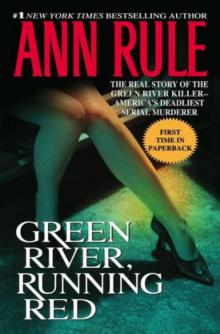 Green River, Running Red
Green River, Running Red Bitter Harvest
Bitter Harvest Dead by Sunset: Perfect Husband, Perfect Killer?
Dead by Sunset: Perfect Husband, Perfect Killer?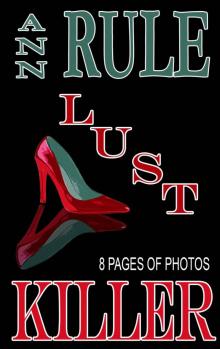 Lust Killer
Lust Killer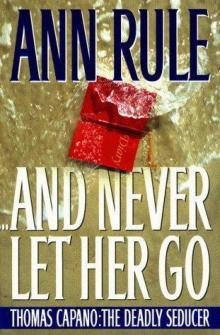 And Never Let Her Go: Thomas Capano: The Deadly Seducer
And Never Let Her Go: Thomas Capano: The Deadly Seducer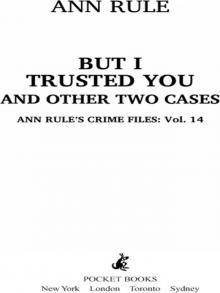 But I Trusted You and Other True Cases
But I Trusted You and Other True Cases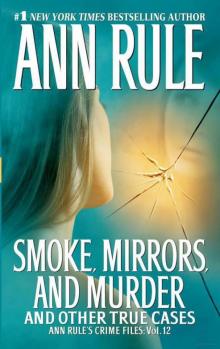 Smoke, Mirrors, and Murder and Other True Cases
Smoke, Mirrors, and Murder and Other True Cases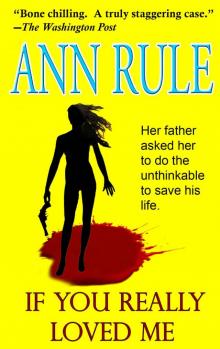 If You Really Loved Me
If You Really Loved Me Kiss Me, Kill Me and Other True Cases
Kiss Me, Kill Me and Other True Cases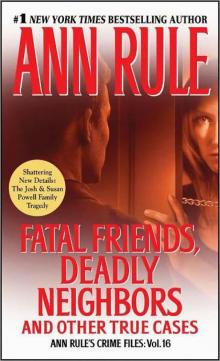 Fatal Friends, Deadly Neighbors and Other True Cases
Fatal Friends, Deadly Neighbors and Other True Cases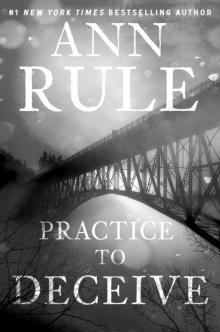 Practice to Deceive
Practice to Deceive Mortal Danger and Other True Cases
Mortal Danger and Other True Cases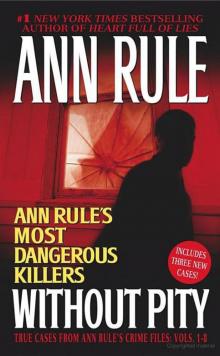 Without Pity: Ann Rule's Most Dangerous Killers
Without Pity: Ann Rule's Most Dangerous Killers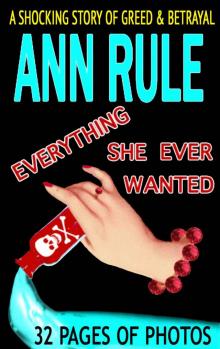 Everything She Ever Wanted
Everything She Ever Wanted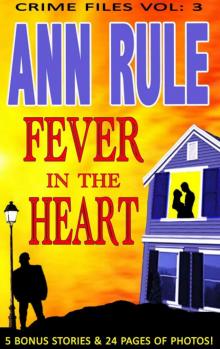 A Fever in the Heart and Other True Cases
A Fever in the Heart and Other True Cases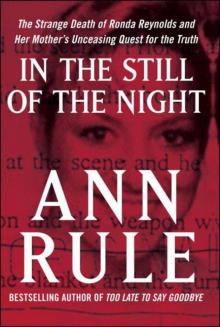 In the Still of the Night
In the Still of the Night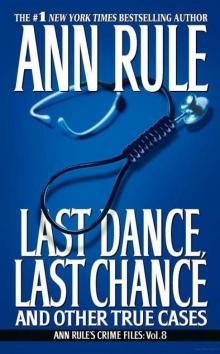 LAST DANCE, LAST CHANCE - and Other True Cases
LAST DANCE, LAST CHANCE - and Other True Cases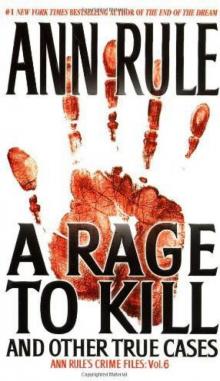 A Rage to Kill
A Rage to Kill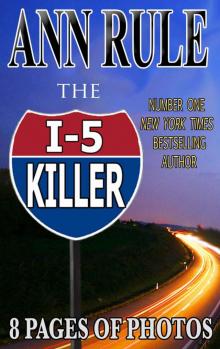 The I-5 Killer
The I-5 Killer The Stranger Beside Me
The Stranger Beside Me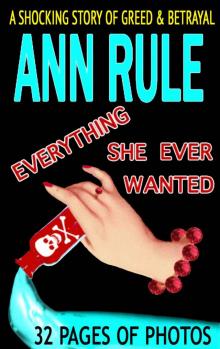 Everything She Ever Wanted: A True Story of Obsessive Love, Murder, and Betrayal
Everything She Ever Wanted: A True Story of Obsessive Love, Murder, and Betrayal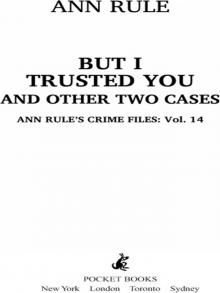 But I Trusted You
But I Trusted You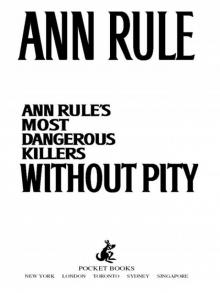 Without Pity
Without Pity Kiss Me, Kill Me
Kiss Me, Kill Me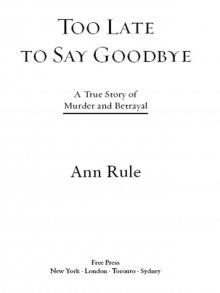 Too Late to Say Goodbye
Too Late to Say Goodbye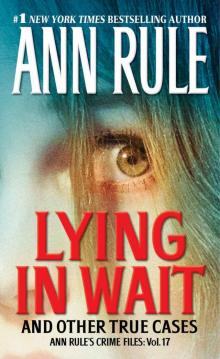 Lying in Wait
Lying in Wait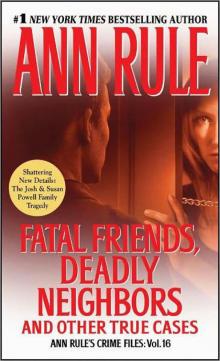 Fatal Friends, Deadly Neighbors
Fatal Friends, Deadly Neighbors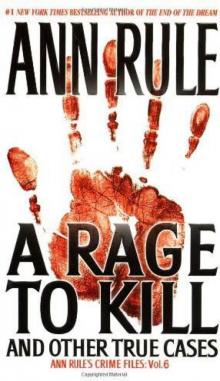 A Rage to Kill: And Other True Cases
A Rage to Kill: And Other True Cases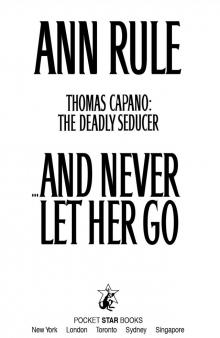 And Never Let Her Go
And Never Let Her Go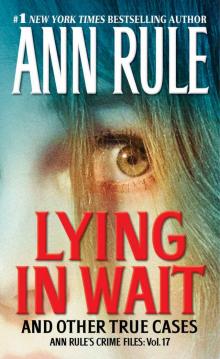 Lying in Wait Ann Rule's Crime Files Vol.17
Lying in Wait Ann Rule's Crime Files Vol.17 Blood Secrets: Chronicles of a Crime Scene Reconstructionist
Blood Secrets: Chronicles of a Crime Scene Reconstructionist No Regrets
No Regrets Mortal Danger
Mortal Danger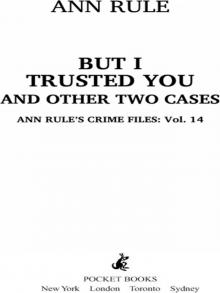 But I Trusted You: Ann Rule's Crime Files #14
But I Trusted You: Ann Rule's Crime Files #14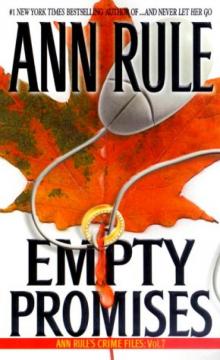 Empty Promises
Empty Promises Dead by Sunset
Dead by Sunset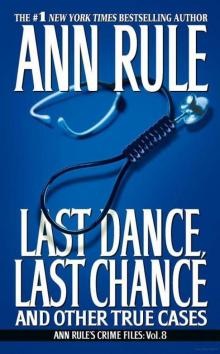 Last Dance, Last Chance
Last Dance, Last Chance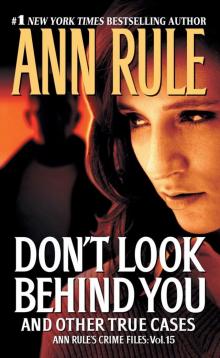 Don't Look Behind You
Don't Look Behind You